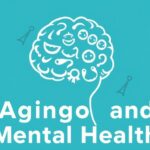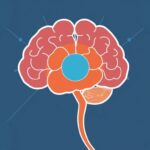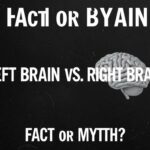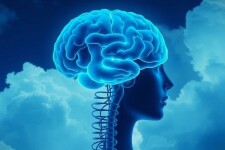Learning disabilities affect millions of people worldwide, yet they remain somewhat misunderstood by many. Whether you are a parent, educator, or someone curious about the topic, understanding the signs of learning disabilities and knowing how to offer support can make a world of difference. Learning disabilities are not about intelligence; rather, they refer to difficulties in specific areas of learning despite normal intelligence. Recognizing the signs early and providing the right support helps individuals overcome challenges and thrive both academically and personally.
In this article, we will take a deep dive into what learning disabilities entail, how to identify common signs, and explore practical ways to provide support. We will cover different types of learning disabilities, day-to-day struggles faced by those affected, and effective strategies that empower learners and help build confidence. Whether you’re looking to understand more about dyslexia, ADHD, or other learning challenges, you’ll gain useful insights and actionable tips that can make a real difference.
What Are Learning Disabilities?
Learning disabilities are neurological disorders that affect the brain’s ability to receive, process, store, and respond to information. These challenges interfere with acquiring certain academic skills such as reading, writing, math, or organizational skills. It’s important to emphasize that learning disabilities are not a reflection of a person’s effort or intelligence, but rather brain-based difficulties that require specific approaches to learning.
Common learning disabilities include dyslexia (difficulty with reading), dysgraphia (difficulty with writing), dyscalculia (difficulty with math), and ADHD (attention deficit hyperactivity disorder) which often impacts focus and organization. Each kind of disability manifests differently, and sometimes a person can experience more than one type simultaneously.
How Learning Disabilities Differ From Other Challenges
Many people confuse learning disabilities with intellectual disabilities or emotional problems, but it’s key to understand the difference. Learning disabilities do not affect overall intelligence; people with learning disabilities often have average or above-average intelligence but struggle in particular areas. Emotional or behavioral issues can sometimes result from frustration caused by learning difficulties, but they are not the root cause. Distinguishing between these can help tailor the appropriate support.
Recognizing the Signs of Learning Disabilities
Knowing the signs of learning disabilities is the first step toward getting help. Early identification plays a crucial role in ensuring that the right interventions are put in place before children fall too far behind. Here are some broad categories of signs to watch for, broken down by age and type of difficulty:
Signs in Early Childhood
- Delayed speech or language skills compared to peers
- Difficulty learning basic rhymes, letters, or numbers
- Problems with fine motor skills, such as holding a pencil or using scissors
- Struggling to follow simple instructions or routines
- Frustration or avoidance when presented with learning tasks
Signs in School-Aged Children
- Difficulty reading, spelling, or understanding what they read
- Problems with handwriting or organizing written work (dysgraphia)
- Struggles with math concepts or basic calculations (dyscalculia)
- Short attention span, easily distracted or impulsive behavior (ADHD)
- Slow processing speed or difficulty following multi-step instructions
- Consistently low scores in specific academic areas despite effort
Signs in Adolescents and Adults
- Continued difficulties in reading, writing, or math despite additional education
- Challenges with time management, organization, and completing tasks
- Low self-esteem or anxiety stemming from academic struggles
- Problems understanding written instructions or communicating complex ideas
- Difficulty learning new skills or adapting to changing workplaces
Common Signs by Type of Learning Disability
| Learning Disability | Common Signs |
|---|---|
| Dyslexia | Difficulty reading fluently, confusing similar letters, slow spelling, trouble sounding out words |
| Dysgraphia | Poor handwriting, inconsistent spacing, difficulty organizing written work, trouble expressing ideas in writing |
| Dyscalculia | Struggles with number sense, memorizing math facts, understanding math symbols, difficulty in telling time or managing money |
| ADHD | Inattention, hyperactivity, impulsiveness, difficulty staying focused, trouble following through on tasks |
Why Early Identification Matters
Early identification sets the stage for effective intervention. When learning disabilities go unnoticed, children may develop negative beliefs about their abilities, leading to frustration, anxiety, or behavioral issues. Teachers and parents who recognize signs sooner can coordinate evaluations, get appropriate support services, and find tailored teaching methods that play to strengths and address weaknesses.
Children who receive early help tend to perform better academically and develop healthier self-esteem. Early intervention also reduces the risk of long-term educational challenges and social difficulties. Hence, awareness and vigilance among caregivers and educators is a powerful tool.
How to Get a Learning Disability Diagnosis
If you suspect a learning disability, a formal evaluation by professionals such as educational psychologists, neuropsychologists, or specialized therapists is necessary. The diagnostic process often includes:
- Review of educational history and academic performance
- Interviews with the child, parents, and teachers
- Standardized tests measuring intelligence, academic skills, memory, and processing
- Behavioral assessments to check attention, impulse control, and social skills
- Observations of learning styles and challenges
The results help identify specific difficulties and rule out other conditions. A clear diagnosis enables access to tailored support such as Individualized Education Plans (IEPs) in schools or specialized tutoring.
Types of Support for Learning Disabilities
Support for learning disabilities should be multifaceted, combining educational strategies, emotional support, and adaptations that make learning more accessible. Here are the main ways support is typically structured:
Educational Interventions
Specialized teaching techniques tailored to the learner’s challenges can make a big difference. For instance, multisensory instruction (using sight, sound, and touch) helps students with dyslexia grasp reading. Breaking down complex tasks, repetitive practice, and visual aids assist in math learning for those with dyscalculia. For ADHD, structured routines and frequent breaks support sustained attention.
Accommodations in School and Work
Accommodations might include extra time on tests, use of assistive technology (like text-to-speech software), allowing oral responses, simplified instructions, or quieter work environments. These changes do not lower expectations but rather level the playing field.
Emotional and Social Support
Struggling with learning disabilities can be emotionally taxing. Counseling or support groups provide a safe space to express frustration and build coping skills. Encouraging positive self-talk and celebrating small successes help build resilience and confidence.
Parental and Teacher Involvement
Parents and teachers play a vital role by providing encouragement, advocating for resources, and maintaining communication about progress. Parental involvement at home through consistent routines and helping with homework offers stability. Teachers trained in recognizing and supporting learning disabilities ensure that interventions match the student’s evolving needs.
Assistive Technologies That Help
Technology has revolutionized support for people with learning disabilities. Here’s a list of some helpful tools commonly used:
- Text-to-Speech Software: Converts written text into spoken words, useful for those with reading difficulties.
- Speech-to-Text Apps: Allows speaking instead of writing, helpful for dysgraphia or motor challenges.
- Organizational Apps: Calendars, reminders, and task managers assist those with ADHD in managing time and assignments.
- Math Assistance Tools: Calculators, math games, and interactive tutorials help students with dyscalculia.
- Visual Aids: Graphic organizers and color-coded notes improve understanding and retention.
By incorporating technology, learners can overcome barriers that once hindered them, building autonomy and success.
Creating a Supportive Environment
A positive, understanding environment both at home and school fosters growth and removes stigma. Here are key elements for creating such an environment:
| Element | Description |
|---|---|
| Patience | Allow learners time to process information and complete tasks without pressure. |
| Flexibility | Adapt teaching methods and expectations based on individual needs. |
| Encouragement | Celebrate efforts and achievements to build self-confidence. |
| Openness | Promote open communication about struggles and successes to reduce stigma. |
| Collaboration | Engage parents, educators, and specialists in a team approach. |
Fostering respect and understanding helps people with learning disabilities feel supported and understood, which is essential to their growth.
Tips for Parents and Educators
Here are practical tips to better support individuals with learning disabilities:
- Observe carefully: Look for patterns in behavior and academic difficulties, and communicate concerns early.
- Educate yourself: Learn about the specific learning disability to understand challenges and strategies better.
- Be encouraging: Avoid negative labels and focus on strengths while helping to improve weak areas.
- Use multisensory approaches: Combine visual, auditory, and hands-on activities to aid understanding.
- Keep communication open: Regularly check in with learners to identify stressors or changing needs.
- Seek professional help: Don’t hesitate to get specialists involved for assessment and tailored help.
- Promote independence: Teach self-advocacy skills to build confidence and autonomy.
Resources and Organizations That Can Help
Many organizations offer support, resources, and advocacy for learning disabilities. Here are a few notable ones:
| Organization | Services Offered | Website |
|---|---|---|
| International Dyslexia Association | Information, advocacy, local support groups | dyslexiaida.org |
| Learning Disabilities Association of America | Educational resources, advocacy, research updates | ldaamerica.org |
| CHADD (Children and Adults with Attention-Deficit/Hyperactivity Disorder) | Support groups, education, advocacy | chadd.org |
| Understood.org | Practical advice, tools, community for parents and educators | understood.org |
Connecting with such organizations ensures access to up-to-date information and additional supports for individuals with learning disabilities.
Encouraging Success Stories

Many successful people have learning disabilities, proving that challenges can be overcome. For example, famed entrepreneurs, artists, and scientists often credit their unique way of thinking to their learning differences. Embracing rather than hiding these differences fosters creativity and innovation.
Sharing stories of perseverance inspires learners and helps combat stigma. Recognizing that learning disabilities are just one part of someone’s identity opens up new opportunities for growth and achievement.
Conclusion
Learning disabilities may present significant challenges, but they are far from insurmountable barriers. By understanding the signs and offering the right support, we create opportunities for those affected to flourish academically, emotionally, and socially. Early identification, tailored educational interventions, accommodations, and nurturing environments together lay the groundwork for success. With patience, empathy, and knowledge, parents, educators, and communities can unlock the potential within every learner, transforming difficulties into strengths and leading to a brighter future for all.




















